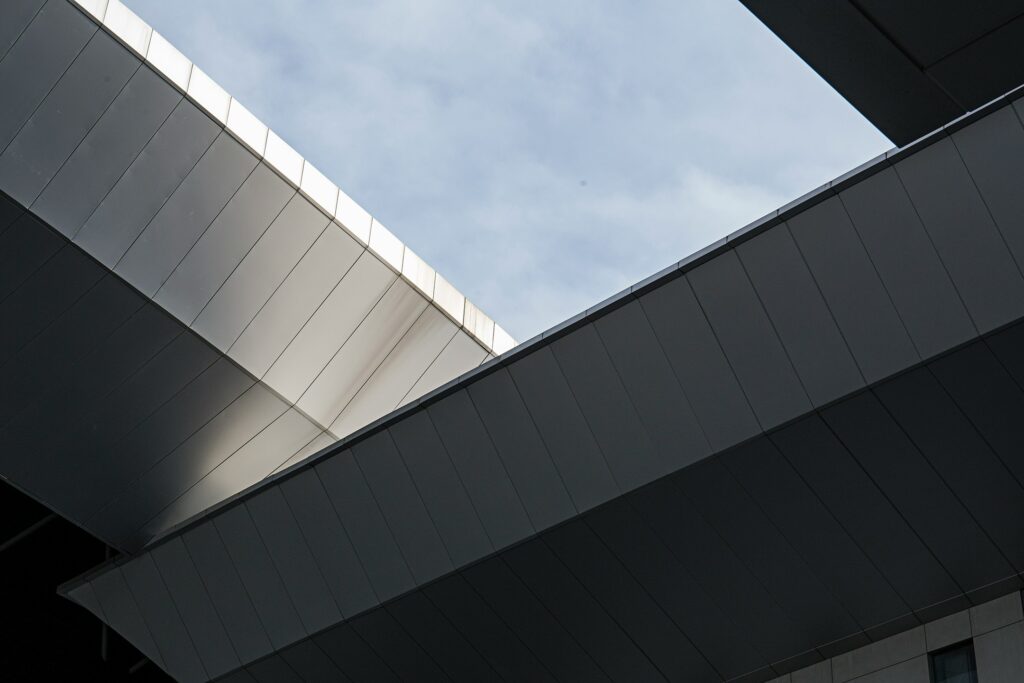
As a senior project architect in a large design-first firm, I’ve seen how team dynamics shape the design process. Decisions in a large firm rarely come from one person. Instead, they evolve through input from everyone on the team, from partners to junior team members, each bringing their own perspectives and expertise. While this collaboration strengthens the design, it can also create ambiguity, especially when key discussions happen without all voices in the room. Because of this, it’s common for teams to pause and confirm decisions with the right people before moving forward.
The project architect’s role is primarily about integrating technical insight into the design process rather than making design decisions. However, this doesn’t mean they can’t contribute to design discussions; their expertise often helps shape feasible and well-executed solutions. With input from various team members, including specialists in curtain wall systems, sustainability, and other disciplines, the project architect plays a crucial role in ensuring that design concepts are grounded in technical and regulatory realities. Designers explore broad aspects such as programming, massing, site orientation, and aesthetics, while the project architect collaborates with consultants to refine these ideas into practical, constructible solutions. By staying engaged in both design discussions and technical evaluations, the project architect helps navigate the complex interplay between creative vision and real-world execution, ensuring that ambitious ideas remain achievable within project constraints.
At the same time, project managers take a broader view, integrating feedback from across the team and setting a clear course forward. They help align different perspectives and ensure decisions are made with a comprehensive understanding of the project. As they are often the closest connection to the client, much of the client input flows through them in informal conversations, shaping the direction of the project. Their ability to provide structure and define next steps keeps projects progressing steadily.
This ongoing exchange between technical limitations, design goals, and project coordination results in a dynamic process where ideas are refined into solutions that are both creative and buildable. However, team dynamics go beyond just communication challenges, they also involve differences in skill levels, expectations, and understanding of tools like Revit and BIM workflows. Misalignment in these areas can create friction within a team, making it essential for project architects to bridge these gaps by providing clarity and support. Successfully navigating these complexities strengthens collaboration and ensures that both technical and creative aspects of a project align seamlessly.
This article explores the key challenges project architects face and offers practical strategies to improve communication, set clear expectations, and maintain project momentum. Whether leading a small team or managing coordination across multiple groups, including clients, consultants, and the construction team, understanding team dynamics is crucial for ensuring a smooth and efficient design process.
Diverse perspectives without a unified direction:
As a project architect, I’ve seen this situation play out many times. When multiple senior team members weigh in on key design elements, like site access points or the building’s main entry, it often results in multiple iterations without a clear design intent. While diverse perspectives are valuable, they can sometimes push other critical drivers like sustainability to the background.
Without a unified direction, the design process can start to feel arbitrary, leading to confusion among the broader team. As the PA, it’s your role to take a step back once the design session concludes, clarify the final direction, and ensure the team has a clear path forward. By reinforcing key decisions and aligning the team, you help turn a collection of ideas into a cohesive design strategy.
Unclear roles and differing assumptions
When roles and expectations aren’t clearly defined, team dynamics can quickly break down. Uncertainty about responsibilities can lead to frustration, inefficiencies, and confusion, making it harder for the team to work cohesively. Sometimes, informal assumptions about roles don’t match formal responsibilities, further complicating coordination and slowing progress.
When communication isn’t clear from the outset, team members can feel uncertain about their purpose, leading to stress and hesitation. While flexibility and adaptability are crucial, especially when client feedback shifts the direction after presentations—teams also need reassurance and clear guidance to stay on track. Without a sense of direction, uncertainty can lead to stalled momentum and decreased morale.
To avoid this, the project architect and project manager must work closely to set expectations, define responsibilities early, and reinforce them throughout the project. The project manager plays a crucial role in synthesizing input from all team members and providing clear direction, ensuring that decisions align with the project’s goals. Meanwhile, the project architect focuses on integrating technical considerations into the evolving design. Together, they help establish team norms, maintain open communication channels, and conduct regular check-ins to keep everyone aligned. By providing stability amid shifting circumstances, they create an environment where the team feels confident, engaged, and able to adapt to new challenges while maintaining progress.
Team members who require additional guidance and mentorship
As a project architect, part of your role, whether explicitly stated or not, is to support junior staff in their professional development. They are an essential part of the team and, like everyone else, need to contribute meaningfully. Without guidance and clear expectations, their productivity and growth may fall short, impacting both the project and their long-term potential.
While mentoring can be time-consuming on top of your other responsibilities, the long-term benefits are undeniable. If left without direction, junior staff may struggle with time management, taking longer on tasks and feeling unsure of their contributions. However, when given structured support, they can develop skills that extend far beyond their proficiency in software like Revit and Rhino. They bring fresh ideas and technical strengths, but their growth depends on exposure to broader aspects of the project, including coordination, problem-solving, and understanding how decisions impact the bigger picture.
Helping them navigate these areas not only strengthens the team dynamic but also creates a more cohesive and capable project team in the long run.
Evolving Client Preferences
It’s a familiar scenario, you’ve spent the week preparing for a client presentation, confident in the direction set by previous discussions, only for the client to shift their preferences at the last minute. Sometimes, it’s a change in design priorities; other times, it’s something more drastic, like reconsidering the site location. Clients can be unpredictable, and while anticipating every shift is impossible, the project architect and design team can stay prepared by encouraging a mindset of adaptability. This isn’t always easy when changes come without warning, but having a flexible approach allows the team to respond thoughtfully rather than reactively. Architects thrive on problem-solving, balancing aesthetics, program needs, and technical challenges in creative and responsive ways. Anticipating client shifts can be easier with repeat clients or in sectors like healthcare, where frequent changes are expected. However, the key is to remain adaptable while maintaining a clear focus.
A project team that can adapt while staying aligned with the project’s core objectives will be better equipped to handle shifts in direction. The project architect and project manager work together to keep the team steady, ensuring that changes don’t derail progress but are instead integrated into a well-structured process. The project manager helps combine shifting priorities, while the project architect ensures that technical and design integrity remain intact. Their combined leadership provides the clarity and direction the team needs to move forward with confidence. By providing reassurance and clear direction, the team can move forward confidently, no matter what the client throws their way. Teams that can manage change effectively are the ones that ultimately persevere and succeed.
Differing interpretations among consultants
Working with consultants can be one of the more challenging aspects of a project, especially when expectations aren’t clearly established from the start. It’s not just about knowing who your consultants are, but about understanding their role, their expertise, and what deliverables they are responsible for at each project phase. Without a solid understanding of each consultant’s role and expertise, coordination can quickly become frustrating. Architects and engineers approach problems differently, and when expectations aren’t clearly defined from the start, it can lead to inefficiencies, confusion, and unnecessary revisions. Recognizing what each consultant brings to the table and ensuring alignment between disciplines is just as important as clear communication in keeping the process smooth and effective.
As architects, we are skilled in many areas and can grasp complex engineering concepts, even though engineering itself is not our primary discipline. Over the years, through close collaboration with a wide range of consultants, it’s hard not to pick up on their expertise. While engineers may not always focus on design, many have a deep appreciation for it and can seamlessly integrate structural or mechanical solutions into architectural concepts. The difference in focus between architects and engineers can sometimes create challenges, but it also presents opportunities for collaboration. Success comes from clear communication, ensuring requests are straightforward and free of unnecessary design jargon. Engineers often find it valuable to be involved in design discussions early on, gaining direct insight into the process rather than interpreting secondhand instructions. Navigating consultant coordination can be complex, but when both sides respect each other’s expertise and work towards a common goal, the result is a stronger, more cohesive project.
Connecting with Construction Managers and Contractors
The construction team plays a crucial role in turning design concepts into reality, ensuring that technical drawings and specifications translate seamlessly to the built environment. A strong working relationship between the project architect, consultants, and construction team is essential for proactively addressing challenges, maintaining quality, and keeping the project on track. While schedule and budget are typically managed by the Construction Manager (CM), the architect still has a role in supporting these efforts by collaborating closely with the CM to identify and resolve potential issues before they escalate.
Construction Managers often take a more strategic, high-level approach, relying heavily on their subcontractors for expertise in materials, sequencing, and problem-solving. These subcontractors, with their hands-on experience, frequently provide invaluable insights that can refine and enhance the design. Over the years, I’ve found that connecting directly with subcontractors is key to resolving on-site issues effectively. They are the ones implementing the work, and their perspective can help bridge the gap between design intent and practical execution, leading to a smoother construction process and a more well-executed project outcome. Building a strong relationship with the construction team is one of the most important aspects of a successful project. They rely on the architect not just for drawings, but for clarity, guidance, and problem-solving when issues arise on-site. A collaborative approach ensures that design intent is carried through while also being practical in execution.
The construction team values architects who are engaged and responsive, those who can provide clear answers without overcomplicating things. In return, they bring expertise in materials, sequencing, and real-world constraints that can refine and improve the design. When architects and the construction team work together with mutual respect, they build trust, solve problems efficiently, and keep the project moving forward, ensuring the design vision is seamlessly realized.
Navigating team dynamics takes time and effort, but it’s essential to a successful project. As a project architect, your role is to build collaboration, provide clarity, and help guide the team through challenges. Listen, adapt, and lead with confidence, because a strong team starts with strong leadership.
Be the ONE
